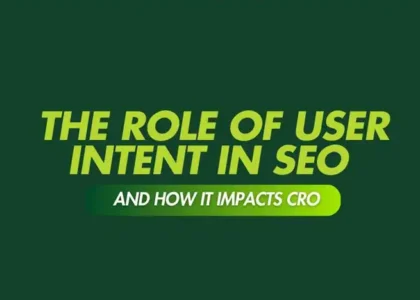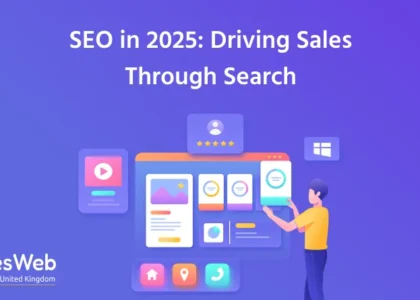Search Engine Optimization (SEO) is the powerhouse for any website or blog post. This is an incredible tool for marketers. Links, Content, and Technical setup are crucial for getting your business website on the search result.
How SEO is measured?
It is important to optimize your web pages along with blog posts. Nowadays, most companies set up their own SEO KPIs for online presence. Some of them are as follows:-
- Conversions from organic traffic
- Keyword rankings
- Growth of organic traffic
- Growth of links
- Number of indexed pages
- Topmost landing pages that attract organic traffic
- Bounce rate and average time on page
Black Hat and Local SEO
Local SEO
Search engines will allow you to position your local business. 46% of Google searches look for information that is based on the local area.
Search engines follow similar principles for local and global rankings.
Black Hat SEO
It is not good to use black hat SEO as Google gives penalties. It is because it manipulates search engine policies. It uses strategies against the policies of search engines.
What is Blog SEO?
Blog SE0 is the process of optimizing the HTML code, blog content, and architecture of the website for search engines. Some of the common things that are associated with blog SEO are:-
- Internal linking
- Installing plugins
- On-page optimization
- Improving the loading of the page
WordPress is the most sought Content Management System for blogging and is used by businesses worldwide. The New York Times, TechCrunch, etc., use this CMS. Most of the leading bloggers use WordPress for blogging.
Go for SEO plugins if are working on WordPress websites. Or, you can take WordPress SEO support from a good team. You will get your website high on the ranking list and marvel with lead conversion & profits.
Goals to consider
You must have two primary goals when you are working with blog SEO:-
- You should write appropriate blog content that follows the requirements and interests of your audience.
- Implement strategies so that search engines can discover and comprehend your blog posts.
You will be enriched with the following elements as soon as you create and optimize your blog posts:-
- Enhance your visibility in organic search
- Build authority of your website over time
- Set up your credibility as a trusted resource
A well-maintained SEO blog offers brand new, quality, and original content for a site. You would be idolized and followed as a reliable information source. Search engines and readers will seek your content again and again.
Tips to optimize blog posts for SEO
1.Content planning with proper Keyword Research
Many of you just guess and write about topics without knowing whether users are interested or not. Please do not follow the traditional method. Rather, craft things that the user looks for.
Check the most sought users' trends/behavior and develop the content that revolves around this.
Keyword Research is a method to find the intent in which the user is interested. It is used by SEO experts and content creators worldwide.
2.Discover Semantic keywords
You need to find the keyword ideas and do detailed keyword research. Semantics are the sub-branches of linguistic words. It derives the meaning from the original word. For instance, you can use semantic words like “Paid Search” or “Keyword Research” for linguistic words like “Search Volume”.
Once done with keyword selection, you have to find LSI keywords. These are the searches similar to your primary keyword. You can include LSI keywords in your content so that your readers can read full-fledged content.
Avoid doing keyword stuffing in your content. It will clutter your content.
3.Write an adequate title for a blog post
A blog post title is highly significant for search rankings. You must implement an engaging title that instigates the user to check your blogs. Make sure to use the keywords so that the user gets to know that your content belongs to the searches they are looking for.
4.Long tail keywords play the right game
It is good to focus on the long tail keyword because these terms are not that competitive. In order to find the long tail keyword, you need to type them in the Google search.
For instance, for the term “Ice cream flavor”, the following long tail keyword appears (check image):-
These types of keywords are termed as long tail keywords.
5.Optimization of blog posts
You must always optimize the blog post that revolves around your term. Yes, you can use the keywords in a few places though.
6.Title tag and title
The Content Management systems such as WordPress have fields for the title. Placing the keyword in the introduction and conclusion section plays the right trick.
7.Headers and sub-headers
Google always loves content with H1, H2, H3, etc. So, ensure to develop content that is in this format. A good way to elaborate your content more crisply.
8.Updation of existing content
You may be thinking to write new content to improve your SEO. Yes, it is partially correct. It is important to update and repurpose the current content and remove the outdated content.
The updated content ranks on the SERP quickly. It will improve your number of leads and visitors. You need not invest fewer resources and lesser time to update existing content.
Also, take an initiative to remove outdated content with no relevancy. It's true that businesses ensure to create evergreen content but some are outdated over time.
9.Arrange Topic Clusters
You need to develop an organized blog. It should be easy and easily readable by the users so that they extract the right information they require.
Go for the broad topics for ranking. You can create different blogs for broad topics and link one content to the other.
Topic Clusters Benefits
- Improved speed of content creation
- The plethora of organized contents
- Improved SEO
- More comprehensive content
Craft Topic cluster
- Deciding the core topics
- Performing keyword research
- Outlining pillars for core topics
- Develop content
- Publish content and initiate linking
- Measure the results of the Topic Cluster





